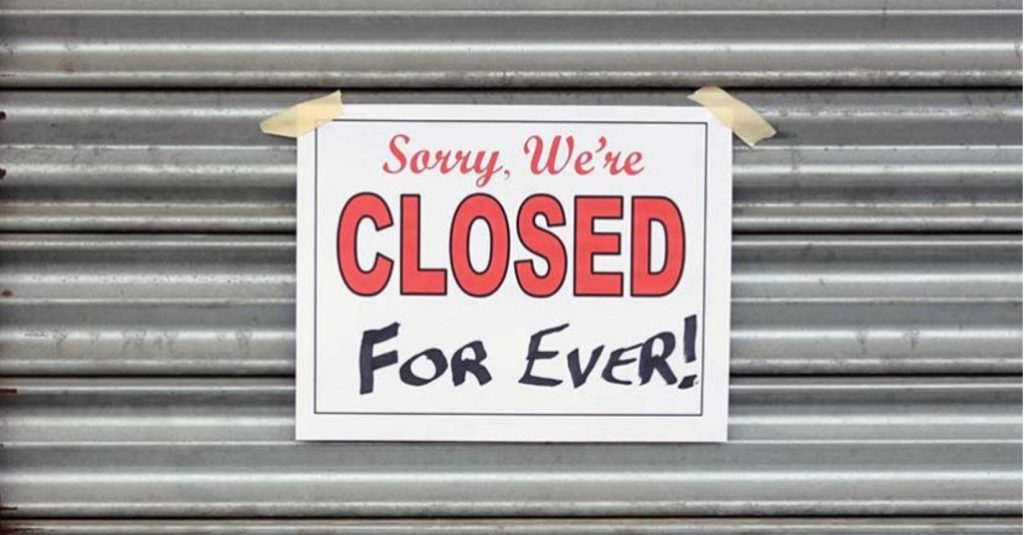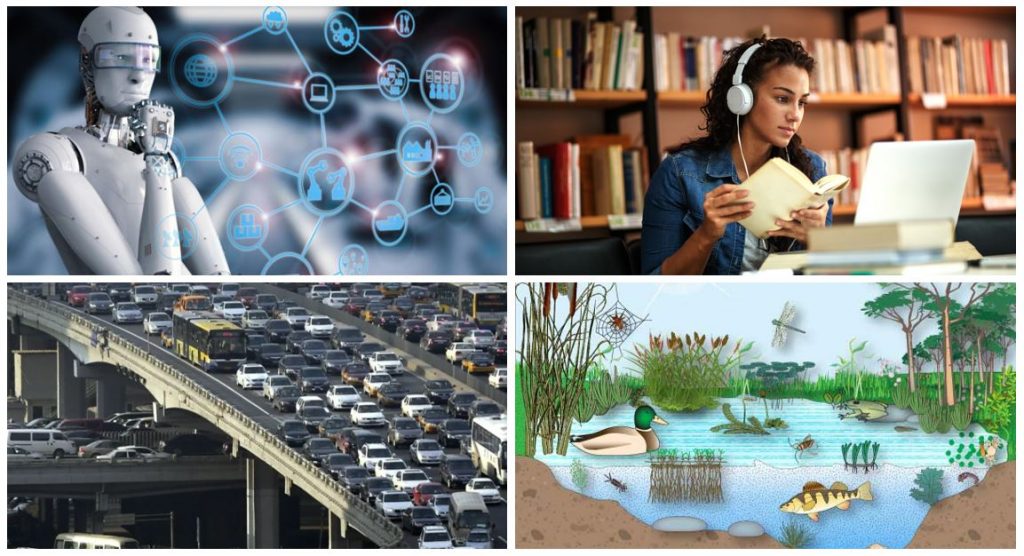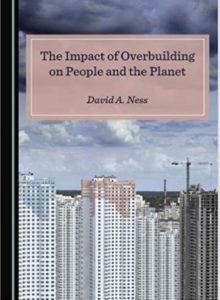
© The Walt Disney Company
Appealing though it might be to be a secret hero*, like Fedora Perry – cool hat! – even this misunderstands platypuses. The internet has plenty of cute images of things that are labelled platypuses but aren’t.
In particular, many cartoons (like Perry) show them with a beaver tail*. They are sort of like an Australian beaver, so we assume they look like them. Even the robot platypus has a beaver tail. But platypuses have furry tails.
Once someone put a beaver tail on a platypus, it was easier for people to copy than check a photo of a real platypus*.
And I guess they were the inspiration for Fantastic Beast the niffler – and now nifflers show up in seaches for platypus images.
And since almost no-one has ever seen a baby platypus*, fake pictures circulate (and there’s a furious debate about what they are even called).
Yes, platypuses are widely misunderstood, when people have even heard of them.
What does a good infrastructure Asset Manager really do*?
*Hint: not a lone hero, not a construction engineer, not necessarily what people think, and they don’t spring fully formed from college…

“The worst misunderstandings sometimes happen between different teams within the supposedly same ethnic group, particularly if they [come] from different locations or had different professional training (say, IT workers mingling with engineers)” – Gillian Tett
I have long been fascinated by differences in approach between engineers and Asset Management professionals – how AM is not just another variety of engineering. And, for that matter, why Operations managers don’t think like AMps, or how IT teams look at the world. For instance: what is it that motivates people in IT teams? (Not, I think, the pleasures of making users happy.)
In my own life, I seem to have sharply favoured working with maintenance, or ex-maintenance people, rather than Engineers with Capital E. Because they were very different experiences.
It is not that there have not been engineers who are massively important to me, such as my brother, or my parents’ best friend Ed – but then again, they never acted like typical engineers, and were not very polite about such ‘grey men’ (Ed’s phrase) themselves. That engineering does have its own cultural norms, some quite odd, has been a question for me for many decades.
So my eye was caught by the review of a book by Financial Times editor Gillian Tett, Anthro-Vision: How Anthropology Can Explain Business and Life. About trained anthropologists such as Tett who have found themselves working in businesses, such as Google or GM, or what they would advise governments on dealing with COVID-19.
She describes how anthropology is about both investigating what’s strange, other, exotic, and about the tools to see our own culture/s, to understand what is weird (or even WEIRD) about it. The book has plenty of interesting examples – about Kit Kats in Japan become an indispensable good luck charm for school exams, about dealing with Ebola or ‘CDOs’, as well as more effective advertising and work practices.
But it particularly made me think of how to understand the oddities of current engineering – why is so often tends towards the short term, to silos and uncoordinated stupidity, even resistance to data. Surely none of those attitudes are ‘logical’ – so what is really going on? I take it as given that, like IT, there is a coherent motivation, a vision of what it means to be a good engineer. So how come… that doesn’t play nice with Asset Management, so often?
And then again… what is the culture of Asset Management, developing before our eyes?
Because I also take it that if you don’t try to understand the water you swim in, you also don’t really understand what you are doing – how it might need to change or evolve – and why it gets up the nose of others who don’t share your basic values.
There is always culture, always weird to someone outside it, and managing infrastructure involves several different ones. So we must have anthropology in our Asset Management toolkits, too!

Next: Ethnographic approaches we might use in practice?

When I managed a small subsidiary company in the 1990s, I read a book by ex ICI chair John Harvey Jones on values. He said – and I am paraphrasing wildly – that any useful organisational value must have an opposite which would work in other circumstances, otherwise it’s so much mom-and-apple-pie stuff you can’t disagree with, but which does not motivate or drive very much, either.
When my team tried articulating our collective values, we all agreed on loyalty – which the marketing men said was not an appropriate marketing slogan, so I knew we were on to something. What could be (in other contexts) a useful opposite? Impartiality, for example. Loyalty was something we felt, and it also turned out to be something our clients could feel (and appreciate). Someone else could contribute impartiality.
As we face a puzzling current widespread refusal of North American infrastructure agencies to set clear SMART targets, we have wondered aloud if it’s because they don’t want anything they could fail at. I begin to wonder if it’s worse than this, a lack of clear purpose or value at all.
I think I have just spotted the worst yet: a transportation agency that’s adopted ‘We Make People’s Lives Better’. Their top leadership are very proud of it, since who doesn’t want to Make People’s Lives Better? The detail of what counts as better, which people, how we will do this – and what we do if one lot of people want something that would adversely affect another group of people? Well, don’t be negative, we can work that all out later. (And don’t even bring up all the critiques of naïve utilitarianism.)
Do we want a bus company to ‘make our lives better’, or do we just want them to concentrate on running an efficient and comfortable bus service?
For the moment, we asset managers can play the game of what, if anything, would not fit under this rhetoric. How could it even in theory rule out a bad option?
Yeah, it was a high-priced consultancy that facilitated this, but why does this even feel right to the executive, apart from being a meaningless feelgood statement?
Is it a triumph of the marketing men, or a complete dereliction of duty?

When a government runs a ‘balanced budget’ its spending (and the jobs that this spending creates) is compensated for by its taxing (and the jobs that this taxing destroys). It follows that the justification for infrastructure can never be the jobs it creates for it doesn’t create any – it simply shifts jobs from one part of the economy to another.
The job losses are not easily measured but they are real. As asset managers we see it all the time, when, following an infrastructure spending splurge, governments try to claw back the money spent by reducing funds for operations and maintenance. So that not only is there not only no net increase in funding and jobs but we are now left with distortions in the economy – more assets to maintain but smaller budgets with which to do it.
We can see this level of distortion when it happens in our own organisations. But impacts extend beyond those organisations that benefit from the infrastructure spending, to those many companies, associations, individuals that now experience higher taxes or lower government spending in their areas or lower demand because spending has been shifted elsewhere. This is difficult to see and where logic must apply.
How can we be sure that spending money on a new infrastructure project trumps spending the same amount of money on hospital staff or teachers, out-of-work youth, or any one of a number of other spending opportunities?
For the distortions to be worth it to the community, we must be pretty sure of the ongoing value of the infrastructure to the community – see Jeff Roorda’s comments to the previous post.
And share your own suggestions

Popularity can be the death of a good idea.
Make a term, or an idea, popular and any number of people will latch onto it and attach it to their own agenda – and it doesn’t matter if their agenda is diametrically opposed to yours. In fact, it might serve them better if it is.
For example, I have seen instances of the term ‘asset management’ taken over by developers, applied to office cleaning, and, of course, to maintenance itself. The one I really objected to was the developers. Figuring that their own term had come into disrepute this particular group had decided to take ours!
We see what we want to see
Another problem with communication of ideas is that we tend to see what we want to see.
Years ago the Public Accounts Committee produced a report showing how much would need to be spent on hospital infrastructure renewal IF nothing was done by way of better maintenance, accounting and planning practices (ie without better asset management). A few days later the Minister for Health, completely ignoring the intent of the ‘if’ statement (as people are sadly inclined to do) profusely thanked the PAC Chairman since this ‘proved’ he needed a larger budget!
On another occasion, I was walking in the city when the State Treasurer dashed across a busy main road to tell me enthusiastically that it was thanks to me that the State had kept its triple A credit rating! What?! I had looked at our asset base and saw a future renewal problem that threatened to dwarf the state’s budget, however the credit agencies had looked at the dollar value of our assets – which we had made visible for the first time – and, ignoring the budgetary impact of restoring the deterioration that had already occurred and would need to be attended to, saw only billions of dollars in assets. We are all subject to this restricted vision. We see what we want to see.
All of this is by way of saying that the term I used almost 30 years ago for accounting for infrastructure has long since been hijacked, and by so many, that it is unwise to continue using it. So, I want to start again with greater neutrality.
The Goal
First: let us be clear about the task – namely to develop financial metrics that drive good infrastructure management and meet the need for financial responsibility and accountability. This requires genuine dialogue between two disciplines – and a listening ear.
Let’s start with a thought experiment
There may be lots of things you like about the current way in which we account for infrastructure, but what don’t you like? Are there problems that it creates for you or your organisation?
What’s your story?

Goodbye
Infrastructure
Guy!
In the 1960s you were young and growing rapidly. We supported you as we do all youngsters. It was the right thing to do. But now you are grown and need to take your place in the support and protection of others. We have already passed the point where we should have weaned you and helped you grow to full independence. That is our fault. We weren’t seeing the bigger picture. But if we continue to baby you, to protect you, to put your needs ahead of others, we will end with a flabby, overgrown infrastructure, absorbed in itself, incapable of recognising its true purpose – which is to support the wellbeing of the community.
This possibility is being brought into clearer view by Covid 19. The global pandemic is having a negative impact on infrastructure demand which, while we may expect some recovery, won’t recover completely. It follows that increasing the supply whilst demand is falling will not produce the economic recovery effects we seek. We need to think again.
So, Infrastructure, the time has come for you to take your rightful place in the world, to underpin the four community wellbeings – social, cultural, environmental and economic. It is time to consider how best you can serve these wellbeings. You need to be clear about your purpose. Simply ‘being’ is self indulgent and will no longer cut it. Like all adults today you need to change and develop, learn new skills, and to do things not done before. Growing bigger is no longer the objective, it is now time to grow wiser, to demand less and provide more. For this you need a new image.
In your youth, you were brash and grey and analog – all concrete and steel. But now we say goodbye to this old image. In your maturity, you need to be self effacing, indispensable, but in the background and not the foreground. In this world, you are no longer grey, but white – the invisible whiteness of digital technology, of human intelligence, of caring, and yes, of love. No longer the focus of attention, it is now your role to help others grow and shine.

You are now the pot, the support, the soil.
It is community wellbeing that must grow.
Your job is to nurture!
Welcome to Adulthood!
Welcome to adulthood!

We are about supporting AM Leaders!
Here’s the situation we face:
We are moving into a “perfect storm” where our natural and built assets move into states of uncertainty and instability. We must rapidly build an understanding of the integration between our ecology and built infrastructure because rapid changes will increasingly challenge or capacity to foresee and manage risks. We are already seeing the initial evidence or these risks in major fire and flood events and likely pandemic events.
Growth boom infrastructure is approaching end of life, ageing population requires infrastructure realignment, climate, environment and virus risk changes start to move from debated possibility to clear and present dangers. Technology is the wild card with the potential to provide new solutions or exacerbate existing problems. Where we allocate our resources is more important than ever before.
The decisions made by this generation will determine the quality of life of future generations. A future that could be bleak and fearful or exciting, prosperous and filled with hope. Our current decision-making framework and decision support processes, systems and assumptions need rapid overhaul to support our current leaders guide us to the future we want and the following generations deserve. We can avoid reacting to preventable or manageable disasters by developing integrated rather than fragmented strategic plans.
What do we want for our future?
Talking Infrastructure’s Vision is a world in which decision makers understand and care about the cumulative consequences of their decisions and their constituencies understand the trade-offs involved in those decisions.
What do we have to stop doing?
We need to stop thinking of ‘infrastructure’ as a panacea for all economic ills, but rather to consider individual infrastructure projects and their individual contributions to general wellbeing – economic, social, and environmental. What questions do we need to ask of all projects to make sure that we are ‘future friendly’? What do we need to know about the relationship between future change and infrastructure? What changes do we need to make to current decision processes to achieve this goal? Could these resources be better allocated to prepare for future foreseeable risks.
We want to avoid infrastructure waste. Stranded assets are assets that are now obsolete or non-performing and recorded in corporate books as a loss of profit. Current estimates vary but run into the many trillions of dollars. Climate, technological and demographic changes all contribute to this problem. But so do we – when we construct infrastructure better suited for the 20th than the 21st century. Every year we use up valuable resources and add to environmental damage and often social damage, constructing long-living assets destined to end on the stranded assets scrap pile. Resources that could be used to mitigate more urgent foreseeable risks.
We believe we can do better
In the past, governments have tended to see infrastructure as an expenditure ‘blob’ – useful for soaking up unused corporate savings to ‘kickstart’ the economy or as a generic ‘source of jobs’. These are the attitudes that have got us where we are now. We believe that if we focus on ‘future friendly’ projects, that takes future change into account and specifically designs for it, we can avoid unnecessary waste and manage future risks.
This requires us not to think of ‘infrastructure’ as a panacea for all economic ills, but rather to consider individual projects and their individual contributions to general wellbeing – economic, social, and environmental. What questions do we need to ask of all projects to make sure that we are ‘future friendly’? What do we need to know about the relationship between future change and infrastructure? What changes do we need to make to current decision processes to achieve this goal?
This is what Talking Infrastructure is about!
Do you also believe we can do better?
JOIN TALKING INFRASTRUCTURE
to keep up with latest thinking and doing and join us in our work towards wiser infrastructure decision making,
go to top of the right hand column.
It’s free and you will be part of a growing number of professionals from all disciplines: planners, strategic asset managers, financial specialists, environmental scientists, economists, sociologists, administrators and many others who share the realisation that to really benefit from the many changes that now surround us, all decisions need to undertand the past, act in the present ,and be open to the futures now emerging, so
Get Involved! Members receive our monthly newsletter containing brief synopses of what we have posted during the month and opportunities for you to share your knowledge and ideas with others.

Photo by Ahmed Aqtai from Pexels
“Growth does not mean size!”
This is the kind of comment that you might expect from a new economics, or a new age group, but you probably would not expect to hear it from a major multinational. Yet that was how the new CEO of Suez Environment, a major global water and waste organisation, opened his announcement of the company’s 2030 Vision. He was referring to physical size for he went on to speak of reducing capital (physical structures) and increasing IT, of focusing not on ‘growth’ as such, but on selecting just those areas in which they could add most value. In other words, to grow performance and profit. And yes, profit is a ‘good thing’, if it is a reflection of good performance.
I have a feeling we are about to see more of this kind of growth take place from now on. We can contrast this approach to the older approach where companies seek to grow simply by amalgamations and mergers. In the recent past, there has been a lot of this ‘growth’ but it really isn’t growth at all, because nothing has been added by the merger (despite claims to the contrary). It is just a re-packaging of what already exists. This has been particularly prevalent in engineering and consulting, and yes, also in asset management, companies. Yet it seems that every time a merger occurs, not only do we add more ‘administrative’ levels (i.e. more cost) but many of those employees who are most able and innovative, leave the mega businesses and set up their own businesses as small, more flexible, more imaginative units – and thrive.
So is ‘size’, as such, a good indicator of company strength? What examples do we have of growing ‘smarter’ rather than simply larger? If we are in future to focus on growing ‘smarter’ rather than ‘larger’, what would we measure, what indicators would/should we focus on? How does ‘big data’ and algorithms offer opportunities for smart growth?
And the important question:
How can strategic asset management contribute to such ‘smart growth’?
 SEVEN SPECIFICS OF BEING A STRATEGIST
SEVEN SPECIFICS OF BEING A STRATEGIST
We were talking about asset management – of course! – but more specifically about ‘thinking like a strategist’ when my friend and colleague, Ruth Wallsgrove, asked:
‘What would a strategist do that a professional engineer, accountant, or administrator would not?’
Now the truth is that any professional can think like a strategist, and often does. The trick to doing it better is to do it consistently, consciously, and in collaboration with others, in other words – corporately! So What does it mean to ‘think like a strategist’? Here are what I consider the 7 specifics.
- The Goal – Strategists adopt a big goal, the aims and objectives of the organisation they serve. They recognise that once the prime objective of their organisation is recognised, there may be many different ways to achieve it, in addition to those already identified – and they look!
- The Time Frame – Not ‘now’, and not ‘then’, but rather ‘from now to then’. A focus on what needs to be done to plot the path from the current situation to the desirable future. Such a path needs to be flexible and allow for adjustment as changes occur. (i.e. there is always a Plan B. C…)
- The Scope – the whole organisation and its wider social and environmental context
- The Reason – never ‘because XYZ is doing it’ or ‘because we have always done it this way’ (or even because it is new, innovative and exciting) but because, on balance and considering the options, it is the best way- for now -of achieving the goal. Always reviewing.
- The Attitude – Pragmatic (think Machiavelli), do what works, but analyse why it works. Curious. Sceptical. Analytical. Challenging.
- The Awareness – Strategists are not Superman and do not attempt to be. They know they need, and they fully appreciate, the contribution of others: professionals, tradespeople, users. The stance is one of willing collaboration.
- The Communication – understanding what drives the actions of others is key to the way in which ideas can and should be presented to be effective. People don’t fear change, they fear change being imposed on them. The art of good communication is winning hearts and minds. Strategists listen for more than words, they attune to the emotions of others (feelings of fear, trepidation, courage, hope)
The key difference between the Strategist and Other Professionals can be seen in the goals that they adopt.
Take Backlog for instance. A maintenance engineer will see the need purely in terms of the asset, its reliability and ease of operation. He will generally not see that the resources needed to achieve this reliability and ease of operation that could be used elsewhere in the organisation, and possibly achieve even greater good.
Take KPIs. An accountant may see, and even promote, rules such as debt ratios or productive staff: overheads ratios because these are manageable by her division. She may not even see the damage that is being caused to overall corporate goals by such rules.
Or take “finished staff work”. Any administrator that insists on finished staff work as the sine qua non of excellent administration has to accept old ideas thus ruling out new ones. Easier on him, but not necessarily to the benefit of the organisation.
Each of these is an instance of ‘solo thinking’
Solo thinking is ‘what’s best for me, my performance, my KPI’ – rather than ‘corporate thinking’ or what’s best for the organisation or community.
Organisations bring this upon themselves to a large degree by failing to articulate their goals, and especially their values. They also bring it on themselves by not encouraging and rewarding the strategic behaviour that would serve them better.
Thinking like a strategist, is ‘thinking holistically’ (I realise this word scares the living daylights out of many people, but it really is necessary!)
Professionals can improve their ability to ‘think like a strategist’ by moving ahead in any of these 7 specifics
Our Situation
The world is running out of raw materials and fresh water and is being overburdened with waste and the global construction industry is a major contributor being the largest consumer of resources and raw materials of any sector, responsible for about 33 per cent of emissions, 40 per cent of material consumption and 40 per cent of waste.
Our Challenge
In seeking to deal with this by advocating carbon neutral cities and a “sustainable” built environment, David Ness says that all the talk is about increasing efficiency of operational energy (heating, cooling, lighting) and reducing associated greenhouse gas emissions.There is a failure to account for resource consumption and “embodied carbon” in our buildings and we need to take this problem seriously. We need to find better ways to “reduce, reuse and recycle” in the construction industry. For anyone in doubt about the seriousness of this situation, look up the Guardian’s Concrete Week, five consecutive articles about the dangers of concrete as a construction material and major landfill component.
Our Question
How can we curtail this excessive resource consumption and waste production and protect our quality of life?
Our Guide to Action
And make no mistake, the size of this problem and the extent of the misery that we will experience if we do not solve it, means that we must all take action – as consumers and producers, as users of buildings and infrastructure and as those who write the policies that allow continued abuse or generate potential improvements.
In ‘The Impact of Overbuilding on People and the Planet’ (Cambridge Scholars Publishing, 2019) David A. Ness provides a guide to action, following the recommendations of the World Summit on Sustainable Development, Johannesburg, 2002, ‘which affirmed that all countries should promote sustainable consumption and production patterns by establishing a “sound material-cycle society”, in which the consumption of natural resources is reduced and environmental impacts are minimised. In both developed and developing countries, the key to achieving this was seen to be the promotion of the 3Rs (i.e. reduction, reuse and recycling of waste) in addition to ensuring the sound disposal of waste.’
David’s ideas are backed by years of research in Australia, Asia and especially China – and they are new, innovative, but also practical! “If we can make use of and adapt existing building and infrastructure stock, we save new carbon and resources,”
Practical Application
“We also need to design any new structures for ease of disassembly, adaptation and reuse, as part of a ‘circular’ built environment.” And to put this into practice he has been working with Arup. .
In 2017, the UniSA research team, of which David is a lead player, was awarded the Arup Global Research Challenge to further pursue his ideas. Part of the New Royal Adelaide Hospital was selected as a test case, with radio frequency identification tags attached to potentially reusable building components such as partitions, ceilings, doors and facade panels, and information such as location, size, type, and age of those components uploaded to a database. This successful ‘proof of concept’ opens the way to the next step – some commercially viable applications. It shows there’s an opportunity here to re-use systems that were previously sent to landfill or at best recycled for their raw materials,
The project has allowed the team to take advantage of relatively new technologies like BIM (Building Information Management) systems and cloud-based database storage systems to help track, categorise and organise building elements in a way that was never before possible.
What can you do?
There are many ideas in this book that you can combine with the latest technology if you are research inclined. But for me, the major impact of the book is on global mindsets. What we have for long taken as natural, normal, and indeed beneficial – that is, ever more building and construction – ‘more cranes in the skyline’ – are not natural, and we need to consider carefully whether the benefits they provide are worth the damage that they inevitably cause. This is not to say we should not build more, just that we need to do more to establish whether any particular proposal is of NET benefit.
For all who have a social and environmental conscience and concern, read
The Impact of Overbuilding on People and the Planet’ by David A Ness.



Recent Comments